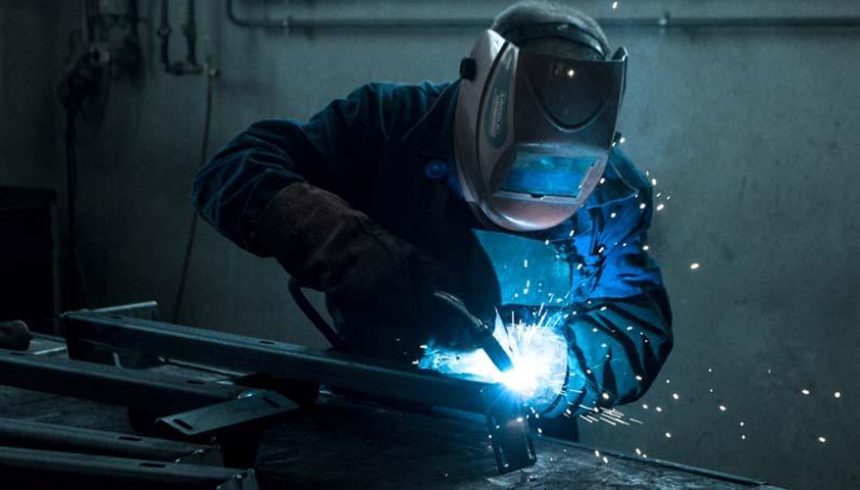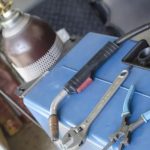Problems with aluminum wire feeding can take many forms, from birdnesting and burnbacks to an erratic arc. Five simple steps can help you minimize these problems and the downtime associated with them.
Need tips on welding aluminum with MIG? Five simple steps can help welders minimize aluminum MIG wire feeding problems and the downtime linked to them.
021208.com
From automotive manufacturing to shipbuilding and trailer fabrication, aluminum continues to be an increasingly popular material due mainly to its high strength-to-weight ratio and its corrosion resistance. The material allows these industries to produce products that weigh less but are capable of withstanding demanding use. For automotive applications specifically, aluminum helps provide emission improvements and fuel savings in new vehicles.
Despite its benefits, aluminum can be challenging to weld. Because of its inherent oxide, high thermal conductivity, and fast cooling rate, it requires better cleaning methods and slightly different welding techniques than steel to achieve a sound weld.
The welding wire also poses potential issues, as it is much softer than steel wire and can be easily deformed or crushed. In gas metal arc welding (GMAW) applications, that means the chance for wire feeding problems is greater. This is particularly true when welding with the 4000 series wires like 4043, 4943, and 4047. These wires offer the advantage of better wetability and bead appearance, but are more prone to feeding problems within the welding gun liner since they have less columnar strength than other aluminum alloys or steel wires.
Five simple steps can help you minimize wire feeding problems and the downtime associated with them.
MIG Welding Aluminum Wire Feeding Tips
Problems with aluminum wire feeding can take many forms—from birdnesting and burnbacks to an erratic arc and more. Birdnesting occurs when the welding wire becomes tangled within the drive roll system. Burnbacks are the result of the wire fusing inside the contact tip.
Aluminum MIG wire feed difficulties in welding
021208.com
Using the correct equipment and components and setting up your aluminum welding system properly are your best lines of defense against wire feeding issues.
1. Use the Right Gun. When welding aluminum, it’s best to use either a spool gun or a push/pull gun.
A spool gun holds a 1-lb., 4-in. spool of welding wire and works well for small applications that won’t require a lot of wire changeover. Even though these guns can be used with longer cables, because the spool is mounted on the gun itself, the wire needs to feed only a short distance—typically from 8 to 10 in. This helps to minimize some feeding problems.
Spool guns do have limitations, however. Their design can hinder access to tight areas, and spools have to be changed very frequently. The spool also adds weight to the gun, so you may find it heavy to weld with for long periods of time.
A push/pull gun is designed to feed the aluminum wire longer distances—up to 50 ft. A motor in the gun pulls the wire, and an assist motor in the wire feeder pushes the wire through the liner that helps feed the wire smoothly to avoid birdnesting.
2. Select the Right Drive Rolls and Set the Tension Correctly. Use U-groove drive rolls to avoid crushing or deforming the aluminum welding wire. These feed the wire efficiently while keeping its round shape and preventing shaving that could clog up the liner.
Setting the drive-roll tension is somewhat a matter of practice and feel. Make sure the drive rolls are aligned, and use the lowest drive-roll pressure that still provides consistent wire feeding. The key is to avoid too much stress on the wire throughout the welding system from the feeder to the contact tip, which can lead to the wire becoming wavy as it exits the contact tip and may lead to an erratic arc. Just as important is having enough tension to prevent the drive rolls and wire from slipping.
Incorrect drive-roll tension can lead to different problems, depending on whether you are feeding from a 1-lb. wire spool with a spool gun or feeding from a large drum of wire with a push/pull gun. Tension that’s too tight typically leads to birdnesting, since the drive rolls will try to push the wire through to the contact tip even if there is an obstruction, rather than letting them slip. If you are welding from a large drum of wire, too much drive-roll tension can also restrict the wire from rotating smoothly as it leaves the drum, which can lead to tangling in the drum.
3. Choose Quality Wire and Set the Spool Brake Tension Correctly. The quality of the aluminum wire you purchase and use can have an effect on its feedability. Look for high-quality wire with a smooth finish and a consistent cast and helix to it, which helps it feed more smoothly. Lower-quality wire could potentially exit the contact tip in a wavy motion that produces an erratic arc.
When setting up the wire feeder, be sure to set the brake tension—the amount of tension on the wire spool—appropriately. The spool should have enough tension to prevent it from overspooling when you stop welding, but not so much that the spool can’t turn easily.
4. Use Contact Tips, Liners, and Guides
Designed for Aluminum Wire. Consumable manufacturers offer aluminum-specific contact tips, which feature smooth bores that are slightly larger for a given wire diameter than tips for steel wire. Aluminum wire has a higher coefficient of expansion compared to steel, so the larger inside diameter (ID) accommodates the increase in diameter of the aluminum wire when it is heated. This helps prevent burnbacks.
Nylon or Teflon liners are recommended for aluminum welding because they have a very low coefficient of friction and prevent shaving of the soft wire that can cause clogs. A clogged liner can lead to birdnesting and premature contact tip wear, and both problems increase downtime and are costly to address.
Similarly, use nonmetallic inlet and intermediate guides to prevent shaving of the aluminum wire.
5. Follow Proper Handling Techniques. It is important to handle the spool of wire properly. Always lift a spool from the bottom or at the center. Never lift a spool in a way that allows the flanges to flex away from the wire, as this can disrupt the precision-wound layers of wire. Take care not to disrupt the manner in which the wire is wound on the spool, either by dropping it or otherwise adjusting it.
Aluminum wire spools are level-layer-wound to ensure consistent wire feeding. Any bends in the spool or flanges could cause the wire to snag or hang up, which can lead to feeding issues during welding.
As always, a trusted welding equipment or filler metal manufacturer or welding distributor can be a valuable resource to help you address your aluminum welding needs or questions.










